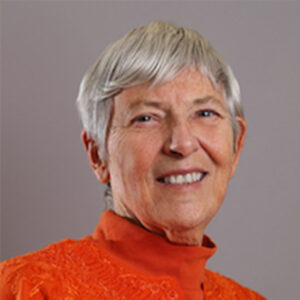
Photo by Markus Winkler via Pexels.
From time-to-time, Integral Yoga teachers ask how to address yogic practices, traditions, and advice on preparing for death. Here are some tips, from our own expert in the field, that may be helpful in preparing for your or anyone’s journey—starting with some basic information and then moving on to how Yoga teachers can add their special gifts. Additionally, please visit our website: https://yogicendoflife.org
Be Prepared
1. Gather your family and/or friends and have a frank discussion about wishes, desires, needs for yourself and others as you approach end of life. Develop an advanced medical directive, such as the excellent “Five Wishes.” Assign a designated health care agent as well as a financial agent. Make a living will, an estate will, and even plan the memorial or service that you wish. Have on record how you wish to dispose of the body or ashes. Designate recipients of your estate. Have all these records secured and easily obtainable when needed (examples can be found online). You may need a notarized copy or the assistance of a lawyer. Every large hospital and every hospice organization has staff provided to assist you with your questions. Every state has different laws, so be sure you are making the most generic and complete coverage of your wishes.
2. Learn all you can about the grief process, especially anticipatory grief. In all situations we all experience grief, and we must go through the process to move on to our new situation. If you can, work with friends, a group, a professional to recognize and go through the common steps of a grief process. It is commonly accepted that all people experience a fear of death and then have to deal with how to face that fact. The steps to acceptance, which may be experienced in any order, is explained by Elisabeth Kubler-Ross as: 1) Denial and isolation, 2) Anger, 3) Bargaining, 4) Depression, and 5) Acceptance. There are many resources and many health and hospices have staff to assist you. You need not be a recipient of their services to use this assistance. There is a need for grief work before, during, and after any event—this takes time and cannot be ignored.
Approach Gently, Peacefully, Listen Deeply
Practicing peace first, last, and always—with self and others—is foremost. Most people enjoy sharing stories of their past, talking about their beliefs, and saying what is important to them at this time. By listening deeply we can ask real, relevant questions to assist in the transition. Most good listeners will enable the person to finally expose what is bothering him or her and the listener may be able to help facilitate closure. Listen, don’t talk much, share feelings of love, of a worthy life, and of leaving a legacy. These seem to be key areas of concern for everyone.
Yogic Practices: Skills Integral Yoga Teachers Can Share
1. Service of silence—sitting, being, presence: We call on our inner resources to maintain our peace while serving others.
2. Releasing tension: As Integral Yoga teachers, we’ve been trained to help others with deep relaxation, visualization, scanning the body for tension, using imagery (re-focus, relax, re-frame, return to sense of order) and simple stretching to relax the body. Used carefully, with approval if necessary from health professionals, we have many ways to help others relax themselves, releasing tension.
3. Breathing through: Integral Yoga Teacher Training has given us three-part breathing, ways to balance breath, deep breath techniques (“in-spire,” sigh, release tension, etc.), ways of matching breath, concentrated and controlled breath, and even a cooling breath. All of these pranayama techniques, when you are trained and have health professional approval, are very helpful for people in transition.
4. Looking within: All people can use assistance in assessment of their present situation, in talking through a life review, and in reflection of where to go from here. Sri Swami Sivananda, Sri Swami Satchidananda, and other great teachers have all indicated that God will not waste a single breath on a person. When that person’s work/service in this lifetime is done, death happens. The trained yogi can bring peace, acceptance, centeredness, and love to assist the person.
5. Adding Spirit: As Swami Satchidananda and Father Keating have said, we have three practices: prayer, when we talk to God (Divine Presence in any form); meditation when we listen for the divine answer; and contemplation, when we think about the answer and prepare to make changes. This three-part practice directly addresses any concern we may have. You will find it useful for yourself daily and certainly for use when dealing with those on the path of dying.
6. Adapt, Adjust, Accommodate: As yogis, we know this is the key to everything! Keep your peace, enjoy the journey, and apply this quote to everything in your life, and especially in preparing for death.
Some Fine Points
1. As the person comes closer to dying, the body often becomes very still. Movement is still useful, but our job is to aid, not insist on any activity. A few days before death, there is often a burst of energy and close loved ones often interpret this to mean the person is getting better, which is usually not the case. Near death, the breath becomes irregular and even stops for some time. All the organs begin to shut down, energy focuses on the heart area, and the person loses his or her senses. Again, any big hospital or hospice can give you booklets with specifics. Your job is to assist family and friends in not becoming afraid, obsessed, or demanding of interventions as the person goes through these expected experiences.
2. Many would like their loved ones to die at home, and with proper papers in place, this can usually be accomplished. Care must be provided at home and this may mean bringing in home health workers. Others will be sent to assisted living, nursing homes, or specific units, with or without the extra care of hospice, palliative care personnel. Your yogic task is to assist where you can, but focus on bringing peace to the situation and the personnel.
3. Autopsy is not needed unless legally required for some reason.
4. The decision regarding organ donation is an individual one. A discussion is very important here. What does the person believe happens when they die? Are they willing to give organs for use by others or for research? Is their body healthy enough to donate? What are the beliefs of those close to them? There is no universal belief or practice in Yoga regarding donation. (For those who are facing receiving an organ, you should note that often after an organ has been harvested and put in another body, the recipient will have change in tastes, even new ideas that can be attributed to the beliefs and tastes of the donor. Clearly, the transfer is more than just the placing of an organ.)
5. The person transitioning should have control over who visits, what rituals are followed, etc. If the person is unconscious, the health care agent should make the decisions. Otherwise it is the spouse, the children from oldest to youngest (over 18), the patient’s parents, siblings—in that order. Laws vary, so be prepared. As a yogic advisor, you may be able to assist in calming the situation, providing music, suggesting schedules, etc. Anything you do can be helpful in the grieving processes of everyone.
6. Most Eastern traditions believe that the time of death is determined by one’s destiny and death and illness (suffering) is a part of life. At this time, life-saving treatment is not necessary. Suicide and euthanasia are forbidden. Therefore, the yogic friend needs to assist the patient and family in these wishes being carried out. If the initial papers are all inclusive, this is easier to accomplish.
7. At time of death, chanting or repetition of prayers, or music that pleases the patient is very helpful. A quiet, calm atmosphere with loved ones around is most comfortable. The person may wish to be “knocked out” or very awake—honor their wishes. This may mean a change in medications and the yogic friend may be able to help the family and the medical people come to the same conclusions.
8. When the person dies, yogic traditions indicate that the body should be attended and a light kept on in the room. When moved, it would be good to still have an attendant as long as possible. Sri Gurudev indicated that the soul may be confused in the transition and these matters make it easier for the soul to be able to move on.
9. Eastern traditions encourage a group of same-sex relatives, friends, and temple members prepare the body. Special prayers, chants will accompany this ritual.
10. In Eastern traditions cremation is preferred because this body has completed its work/service, so there is no reason to keep the vessel. Certain chants and prayers may be said. Ashes must be disposed of according to local laws. In general, it is not legal to spread ashes in public lands, parks, on waterways. Ashes are often buried, sometimes with the burial clothing if it was not burned in the cremation.
11. Most families will hold services, memorials, or gatherings of friends and family to hold a puja that celebrates the person’s memory, and prepares the body ritualistically, such as placing flower petals on all of the bodies orifices to “sweeten the (bodily) temple” and allow the soul a definitive send-off. Rituals differ and the family makes the decisions on what to do if this is not defined in the original health care papers.
Final Reflections
At the time of death, chanting, prayer, or soothing music can help ease the soul’s transition. Yogic traditions suggest that the presence of loved ones, light, and peace helps the soul navigate this sacred journey. As yogis, we are called to offer understanding, compassion, and equanimity at every stage, fostering dignity and grace in this profound transition.
About the Author:
 Swami Sarvaananda received Sannyas (monastic) initiation from Sri Swami Satchidananda in 1977 and has served the Integral Yoga organization in many roles. She is a Board Certified Chaplain, served as a hospital and hospice chaplain for 15 years, and serves on many national boards for the Association of Professional Chaplains. She also served as Dean of the School of Divinity at Hindu University of America, developing online courses for volunteer and graduate-level chaplaincy.
Swami Sarvaananda received Sannyas (monastic) initiation from Sri Swami Satchidananda in 1977 and has served the Integral Yoga organization in many roles. She is a Board Certified Chaplain, served as a hospital and hospice chaplain for 15 years, and serves on many national boards for the Association of Professional Chaplains. She also served as Dean of the School of Divinity at Hindu University of America, developing online courses for volunteer and graduate-level chaplaincy.

